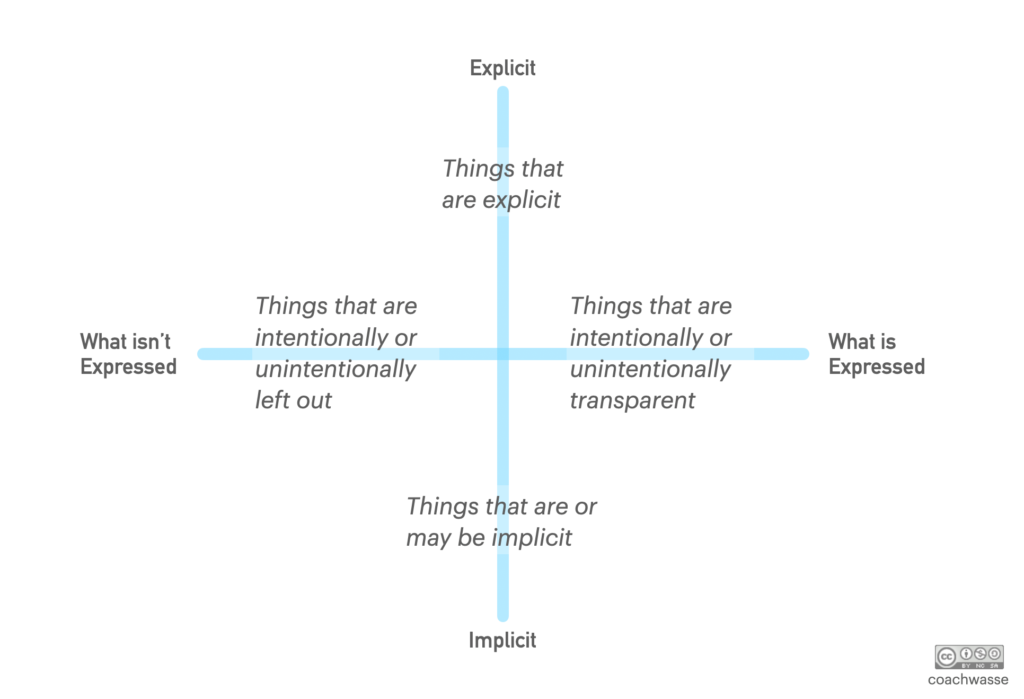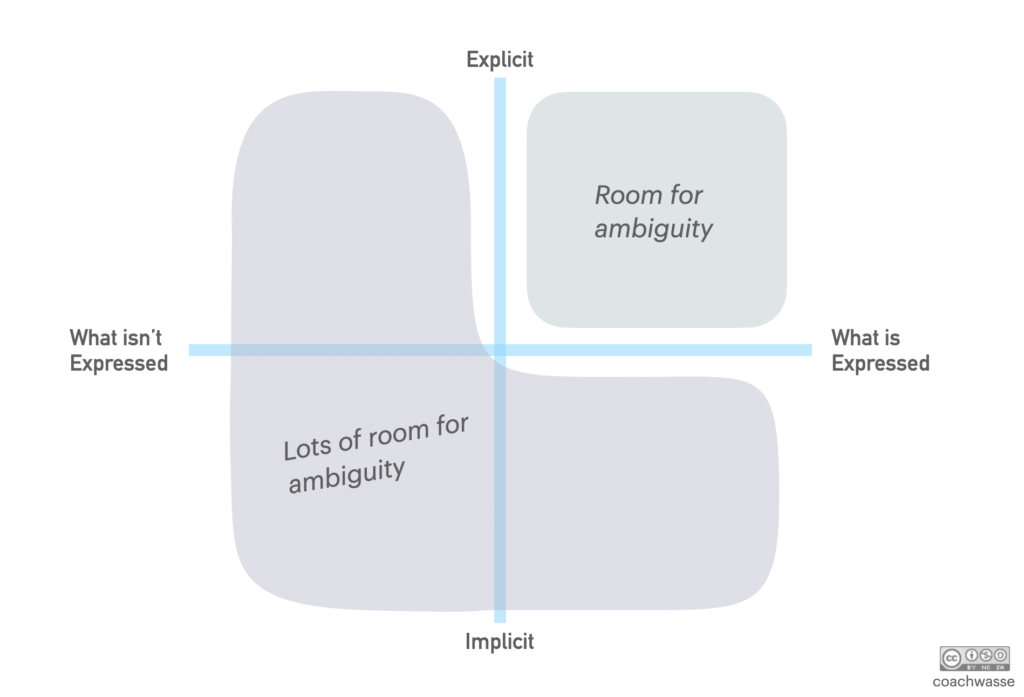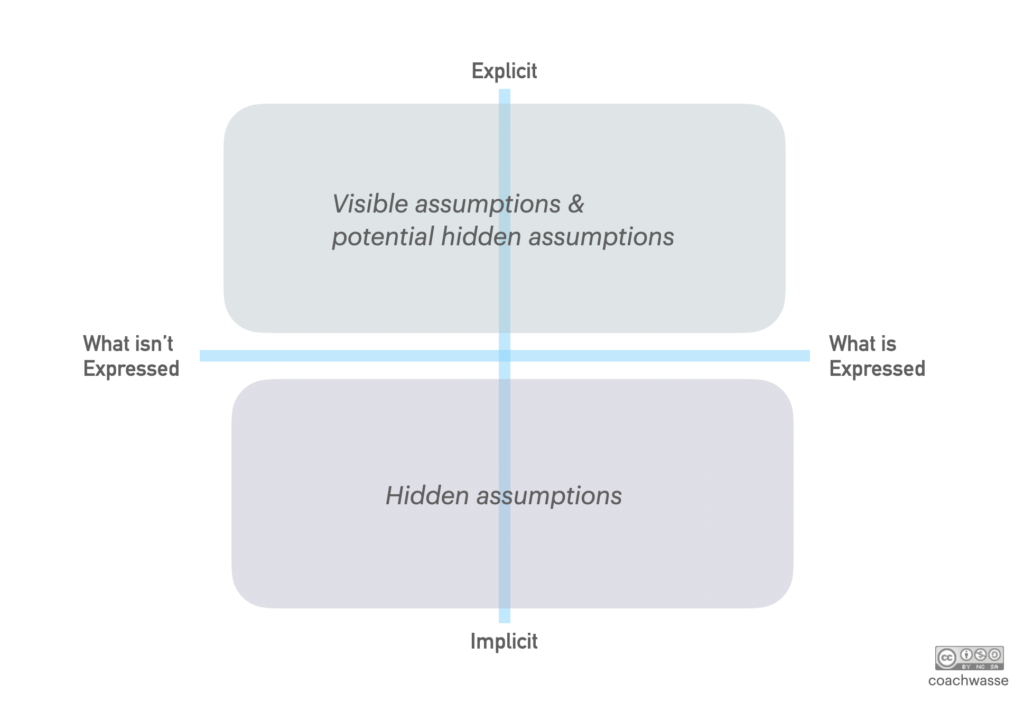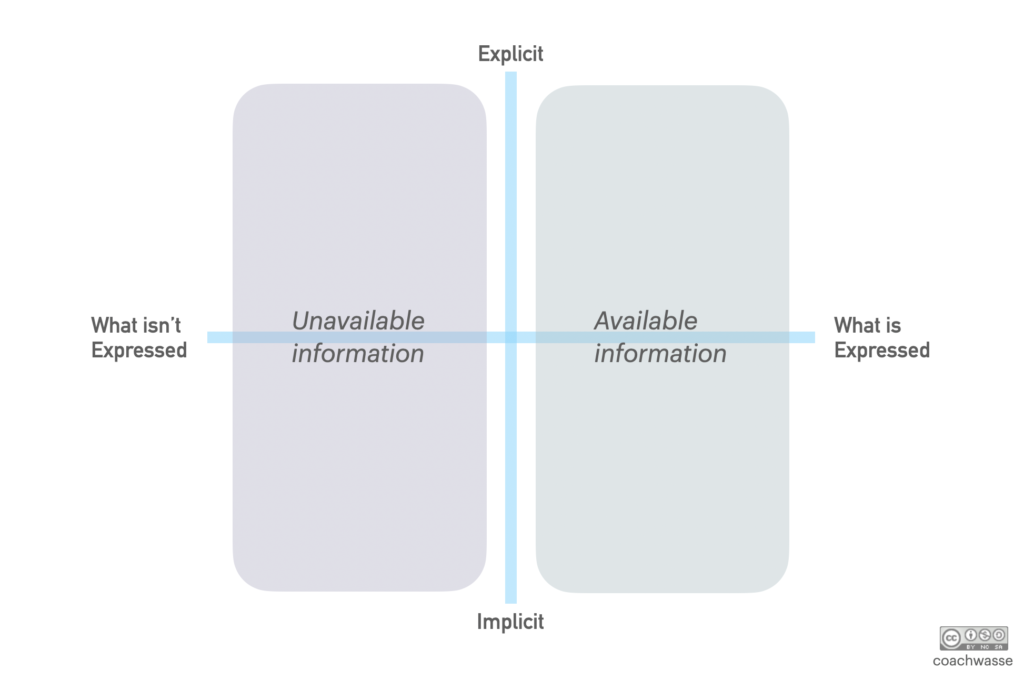As promised in my last post I will deep dive into the subject of shared understanding in this post. I’ll specifically provide details of how to create shared understanding. Let’s jump straight in.
When people get together to identify, prioritise and find solutions to complex opportunities and problems it often results in different and diverging interpretations. These are largely influenced by peoples knowledge, past experiences, background and cognitive biases. Considering this it becomes evident that creating shared understanding is profoundly challenging. Creating shared understanding in a collaborative and goal oriented system – an organisation – is also crucial. For example when people throughout an organisation or within the same team don’t have overlap in understanding of what they’re trying to accomplish the organisation will fail to achieve their goals.
In my intent to effectively understand, navigate and create shared understanding in the organisations I’ve worked with I’ve developed the following model. For the purpose of this article I’ll refer to it as IMEX.

Elements of shared understanding
Every time people interact in a social, collaborative, goal oriented and business context there are a multitude of factors that influence outcomes. Looking at the specific context of shared understanding there are some that have more significance. Such as when information and expression is used. Consider for example what information is available, how it’s interpreted, what’s included, what’s left out, what’s said, with what words, tone and posture. The Satir interaction model paints a particularly clear and integral picture of these factors. The gist of it being: a person receives input, gives it meaning and significance, and responds accordingly.
Judging by my last post there’s considerable risk that interpretations vary and are insufficiently surfaced during collaboration. This means if you would like to understand, navigate and create shared understanding clarity and interpretation is vital. So in addition to information and expression, clarity and interpretation are also significant factors. More specifically building clarity and surfacing interpretations.
Information, Expression, Interpretation & Clarity
First principles of Shared Understanding
Expression as a dimension
During collaboration there’s an exceptionally intimate and mutual influence between information and expression. People’s expressions are a direct result of the brains process of both available and unavailable information. During collaboration expressions in themselves serve as information.

Every organisation that I’ve worked with have had their own collective variant of using information and expression. Eg. at times the same available information have lead to varying decisions and the same word or tone have carried various degrees of meaning and understanding. Even despite people having the same cultural background and first language. On occasion the difference have been substantial or even opposing.
Essentially, how information and expression is interpreted and used can be vastly different and nuanced, both within and between organisations. This is also true for the individual and collective awareness (i.e. clarity) around the mechanism at play. Consequently I’ve found expression to be a useful dimension to apply to shared understanding.
The dimension consist of ‘what isn’t expressed’ and ‘what is expressed’, intentionally and unintentionally. Including verbal and written form – in what tone, pace, body position, facial expression, punctuation, grammar, capitalisation etc.

It’s pretty clear that what is expressed can be relevant when collaborating. What’s not as obvious is that there’s also value in considering what’s not expressed in any given context. Consider the following examples.
Last week we talked a lot about the recent trend of increased retention among users in the 22-29 age group. This week we haven’t mentioned it at all, does that mean it’s not as important as the other issues we’ve covered this week? Or does it mean something else?
– A team member during planning
Last time we talked you expressed frustration with the current situation we have in the team. This time you haven’t, this surely means things have improved. Right?
– A product manager to an engineer
Things that are not expressed during collaboration might bring valuable insight, even profound. It’s worth paying attention to and consider its potential relevance.
Explicitness as a dimension
When people communicate during collaboration they do so both explicitly and implicitly. Some prefer one or the other. Others use it interchangeably depending on the situation or topic. Some find it difficult to understand or relate to implicitness. For some it’s the main way of communicating. Some people have adopted an ability to read between the lines and sometime people look for meaning that isn’t there. Humans, societies and organisations are complex adaptive systems. Clearly explicitness is both complex in nature and linked to the first principles. Because of this I’ve found explicitness to be another useful dimension to apply to shared understanding.

IMEX isn’t intended to be integral and there’s clear overlap between the dimensions. Still singling them out and reasoning about their relation helps to understand, navigate and create shared understanding.
Navigating and creating shared understanding
Navigating shared understating is partly about paying attention the level of ambiguity that exists. This includes paying attention to how many and what interpretations are both being made and can be made. Exploring their relation to make sense of them and reaching conclusions that lead to productive progress. Avoiding any potential urges to strive for unambiguity – you’re in the complex domain after all, where cognitive diversity is desired. Consequently, creating shared understanding involves creating ambiguity awareness.
Creating Ambiguity Awareness
Surfacing and highlighting available interpretations in a collective. Including making sense of them by exploring their mutual relation. With the intent to reach conclusions that lead to productive progress.

All interpretations people make when dealing with complexity are based on assumptions. Navigating shared understanding is partly about discovering relevant underlying assumptions. Assumptions that are either core to an interpretation or that influence diverging interpretations. It’s easy to identify some assumptions while it’s more difficult to spot others. Part of navigating shared understanding is looking for hidden assumptions and exploring their relation to other assumptions and the context itself. Creating shared understanding involves creating assumption awareness.
Creating Assumption Awareness
Surfacing and highlighting underlying assumptions in a collective that are both core to an interpretation and influence diverging interpretations.

The assumptions people make are largely based on cognitive biases and information. Information might be available to everyone, some, few or no one. It’s distribution is rarely obvious. A lack of information influence some assumptions. E.g. a product manager unaware that a specific technology isn’t available might assume it will take less work to develop a product than is required. Navigating shared understanding is partly about identifying and validating what information and lack of information that’s used to form relevant assumptions. Creating shared understanding involves creating information awareness.
Creating Information Awareness
Surfacing and highlighting information and lack thereof that’s used to form relevant assumptions in a collective.

In practice
Consequently, the key to creating shared understating is surfacing and increasing awareness on three levels – ambiguity, assumptions and information – through guiding oneself and the collective.
It’s fair to acknowledge the challenge that comes with this task. The challenge is partly because the brain’s process of collecting information, forming assumptions and interpretations is largely influenced by the limbic system. This involves reacting without thinking – it naturally happens unconsciously. Making this process conscious to oneself and others takes practice.
If you’re unsure how to apply what I’ve covered in this post in practice I suggest you start by assessing how much shared understanding there is in your current context and the impact it has. Either by sharing perceptions on the topic with others or running an exercise. Once you’ve verified that an increase in understanding is needed you can begin your journey by formulating questions and statements that helps surface the three levels of awareness. Including both your own and others understanding and reasoning. Here are a few examples to get you started:
Seems we believe the main reason for _______ is because ________. Have I understood that correctly?
Based on _________ I think the most impactful thing we could do is _________. What am I missing?
What’s the relevance of _________?
As a result, they also help to move what is unconscious in the Satir interaction model into consciousness.